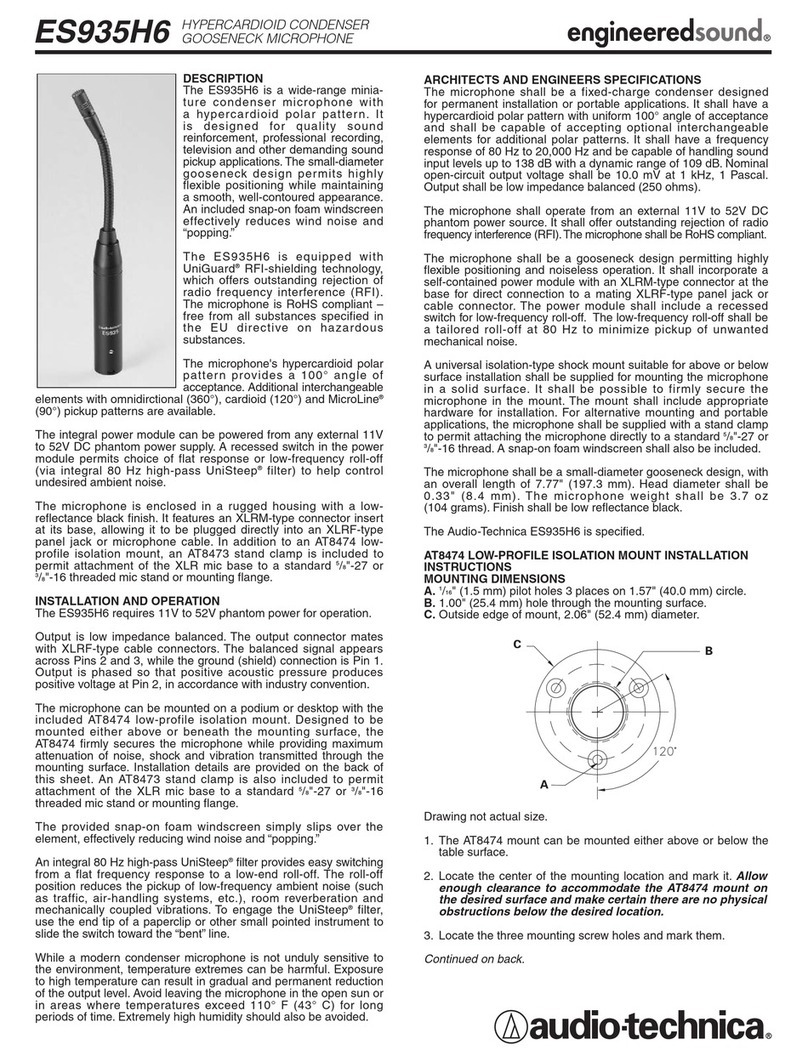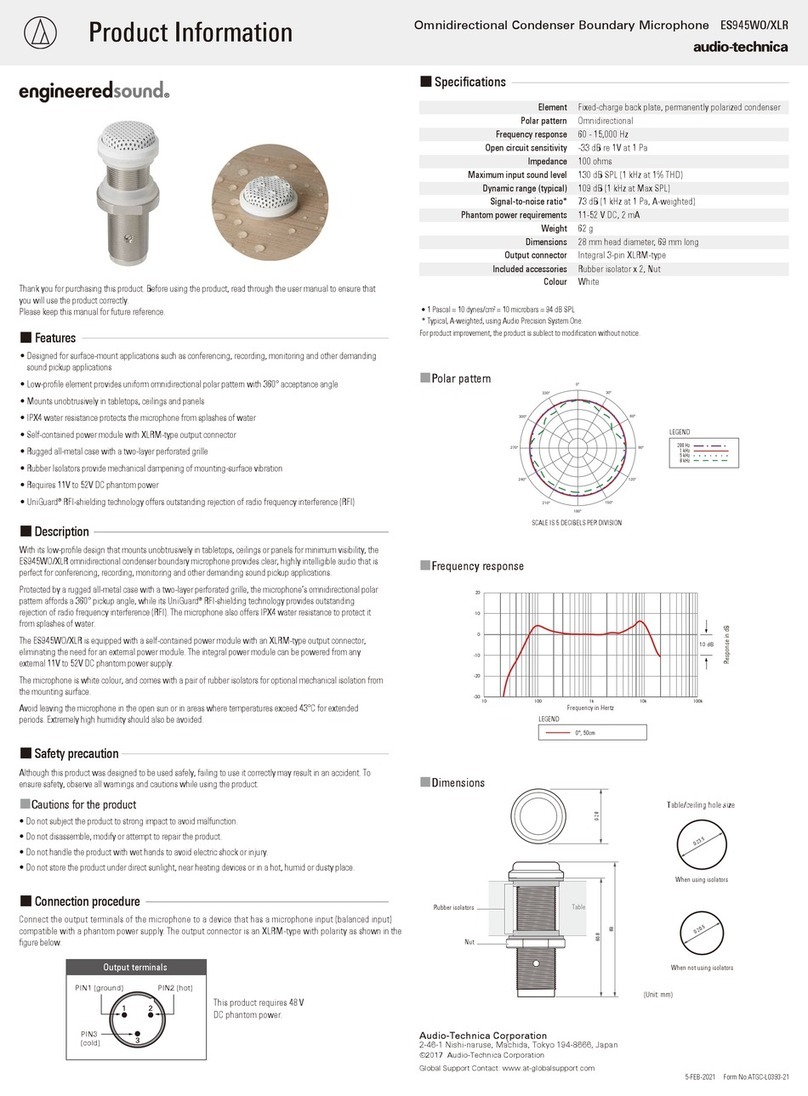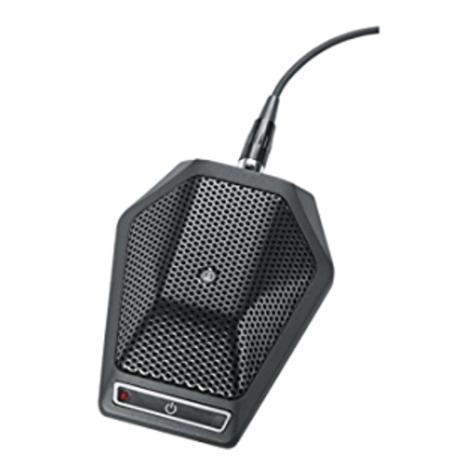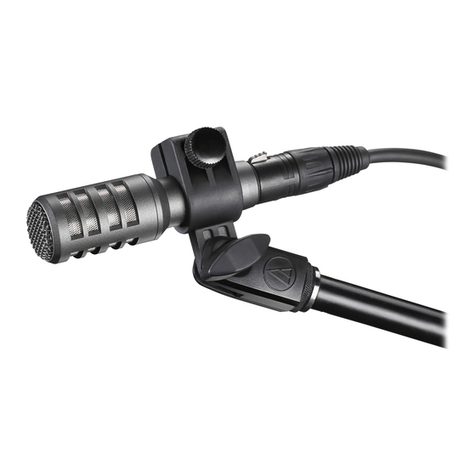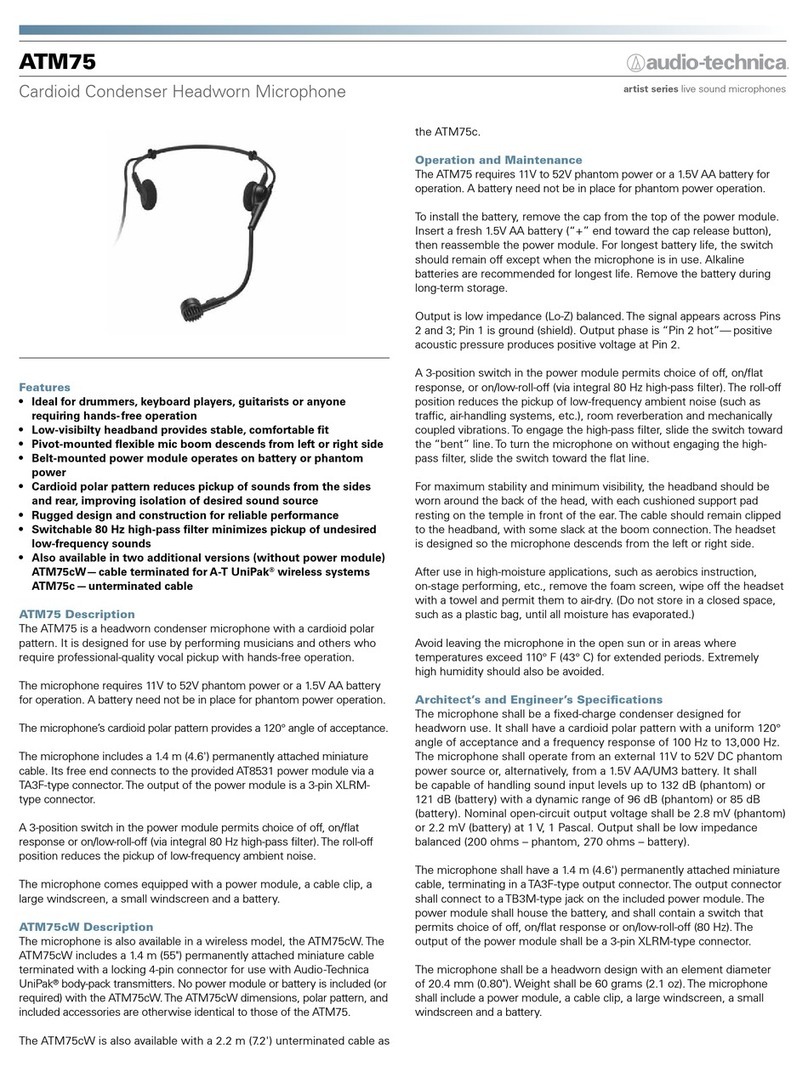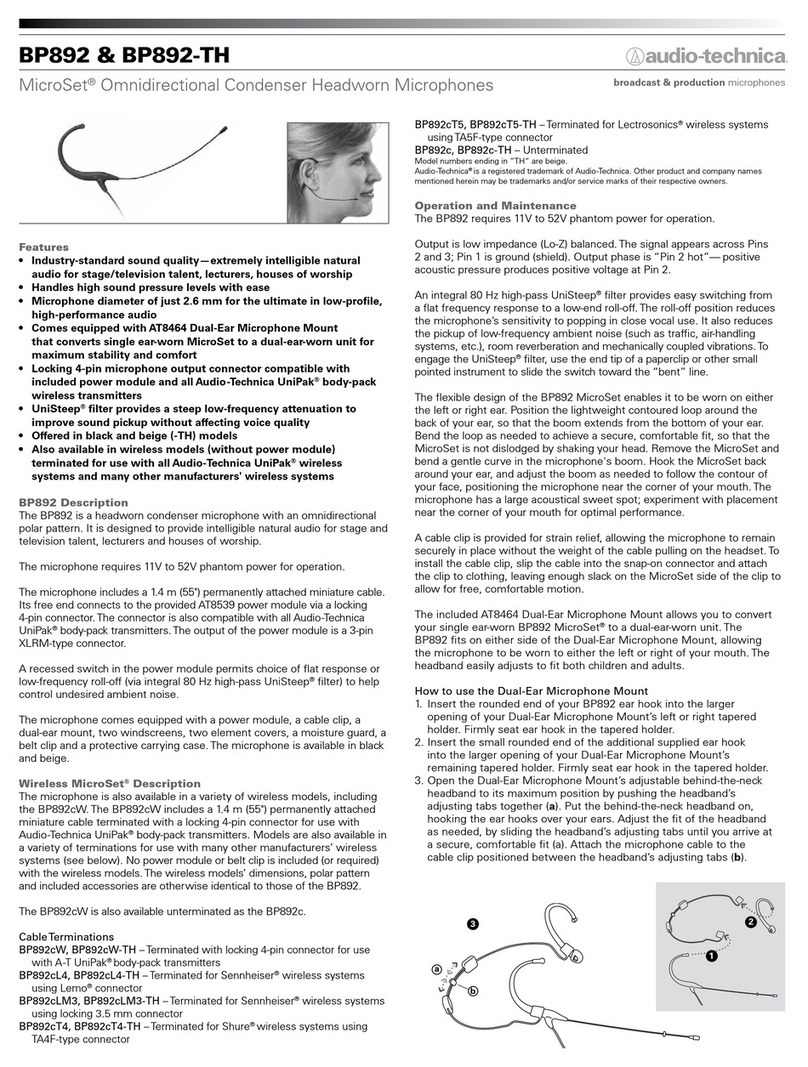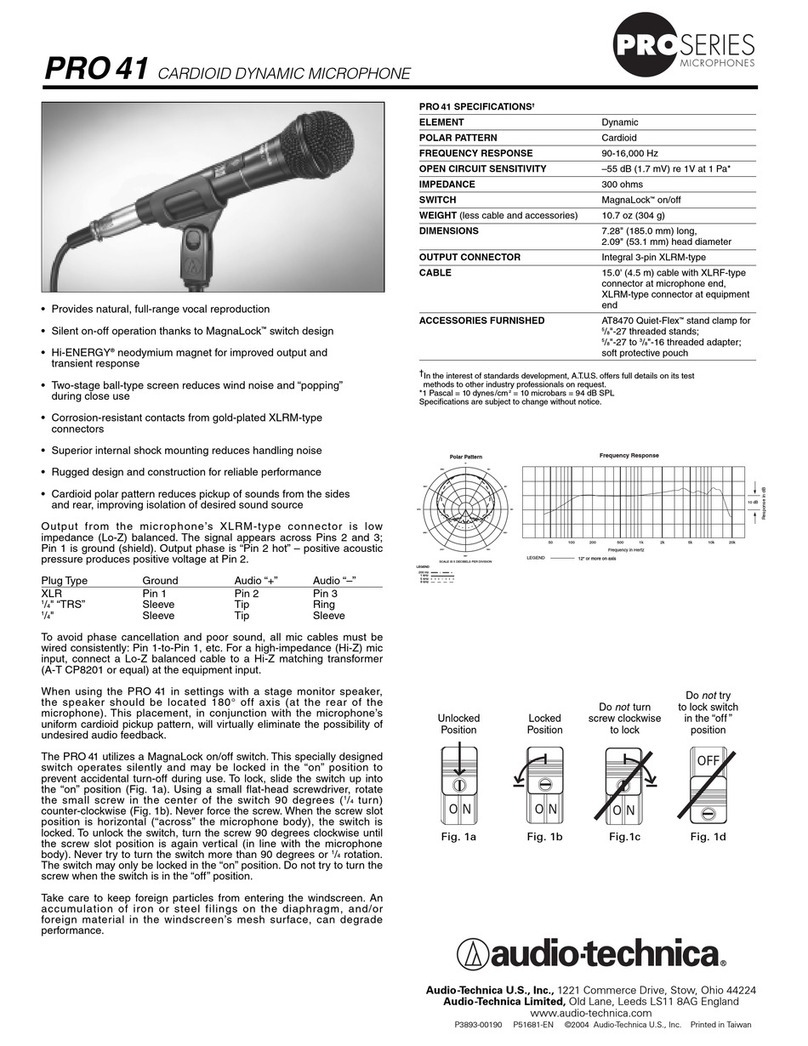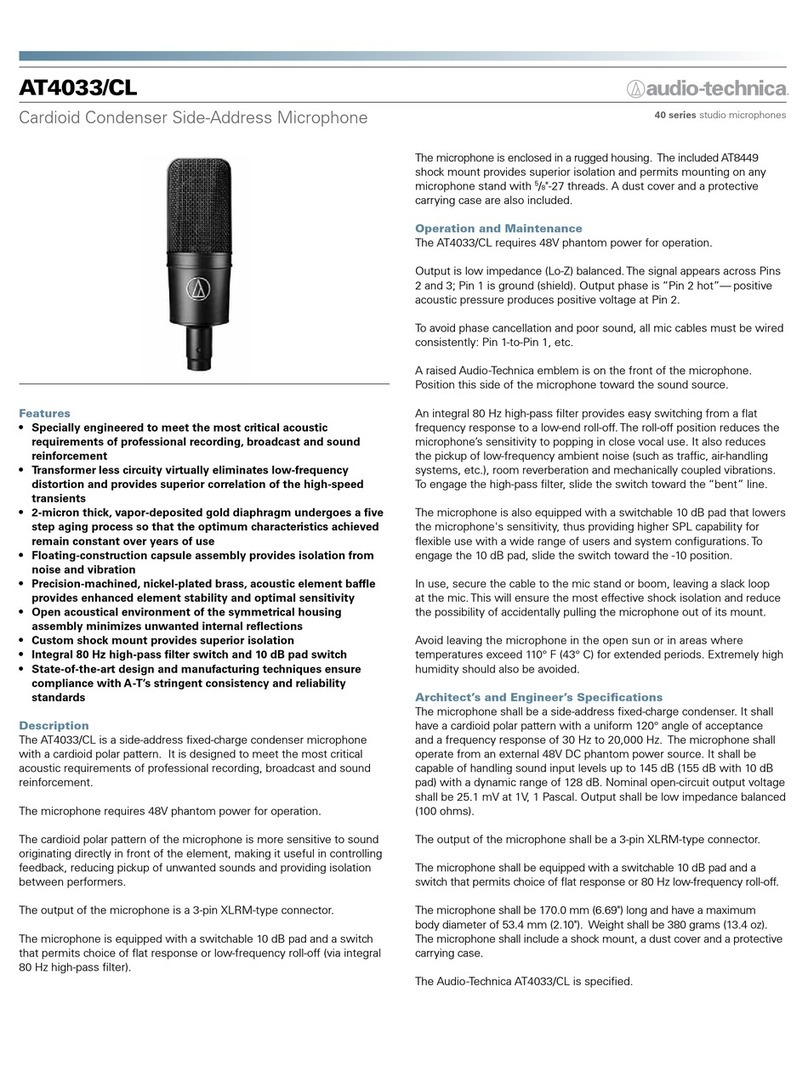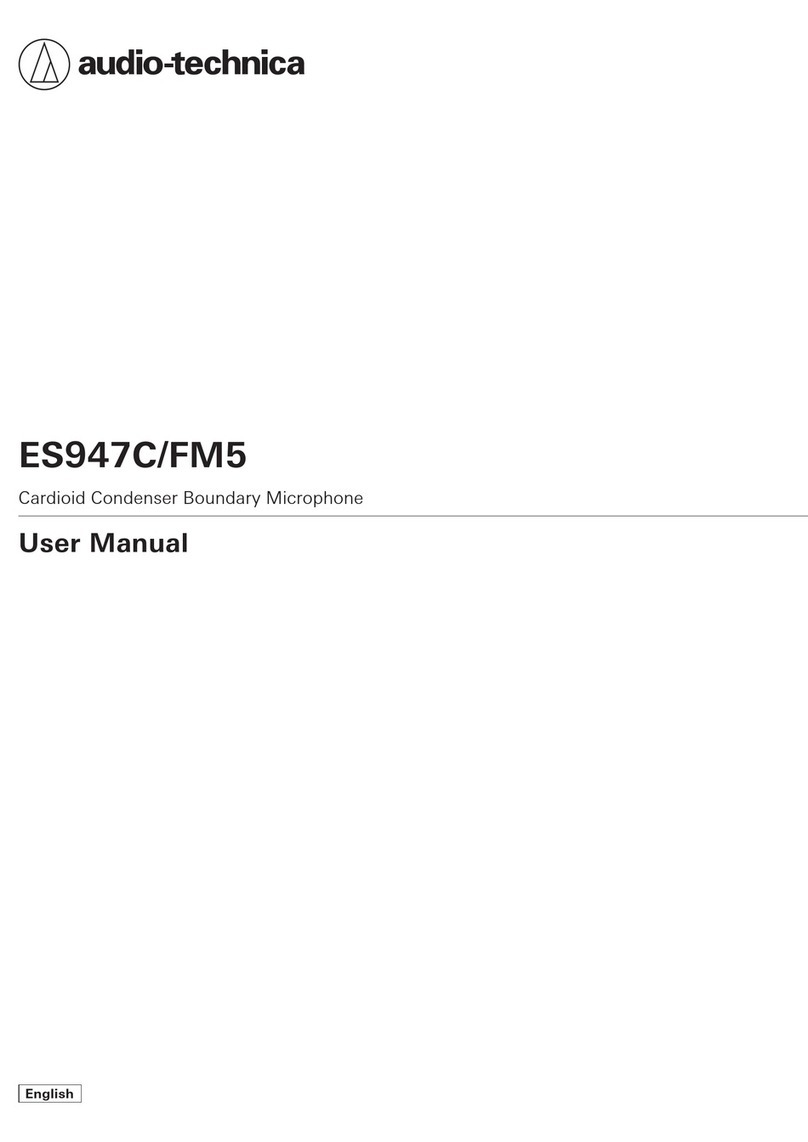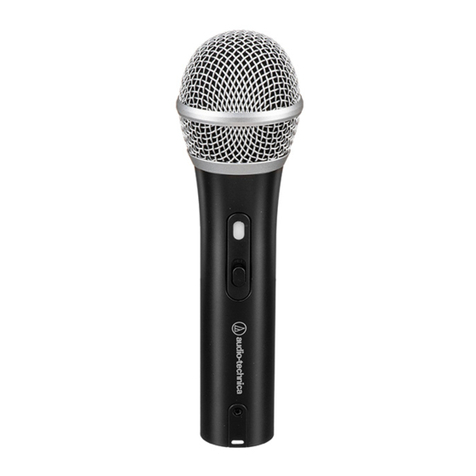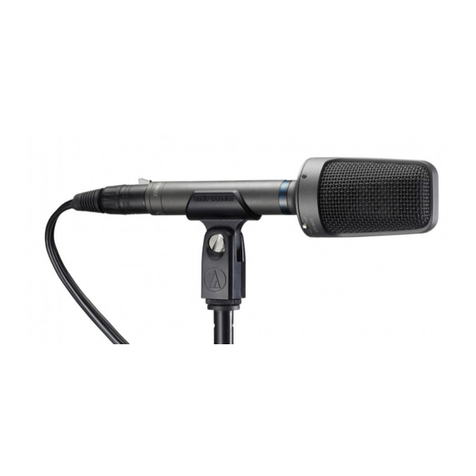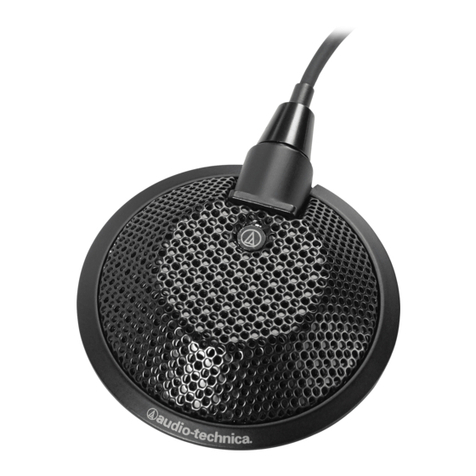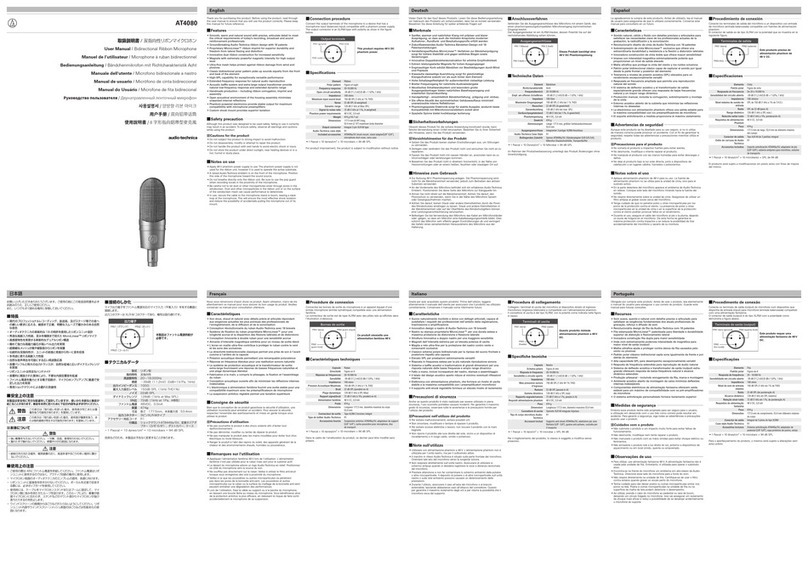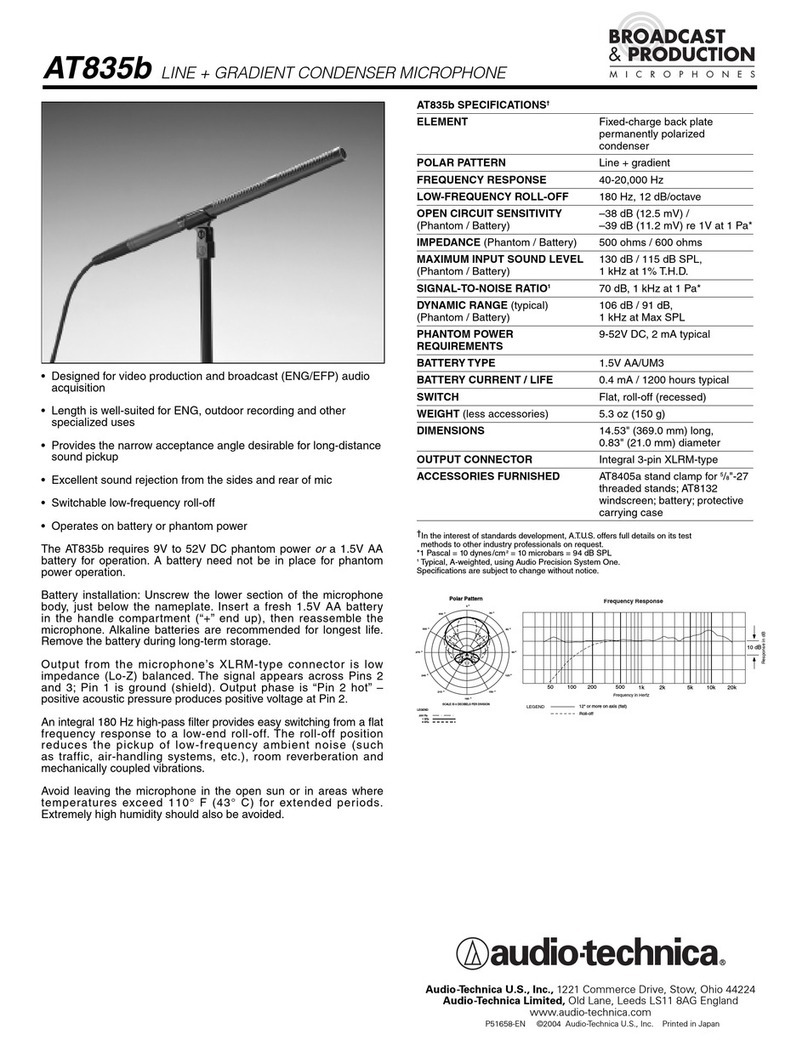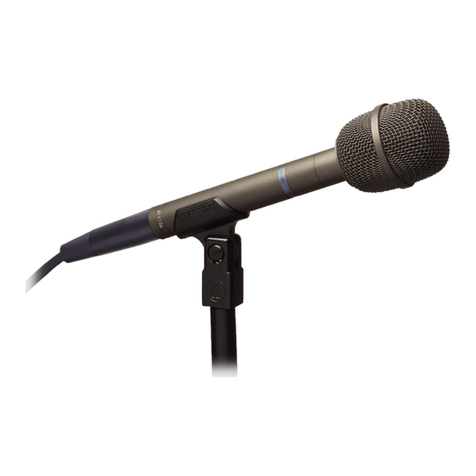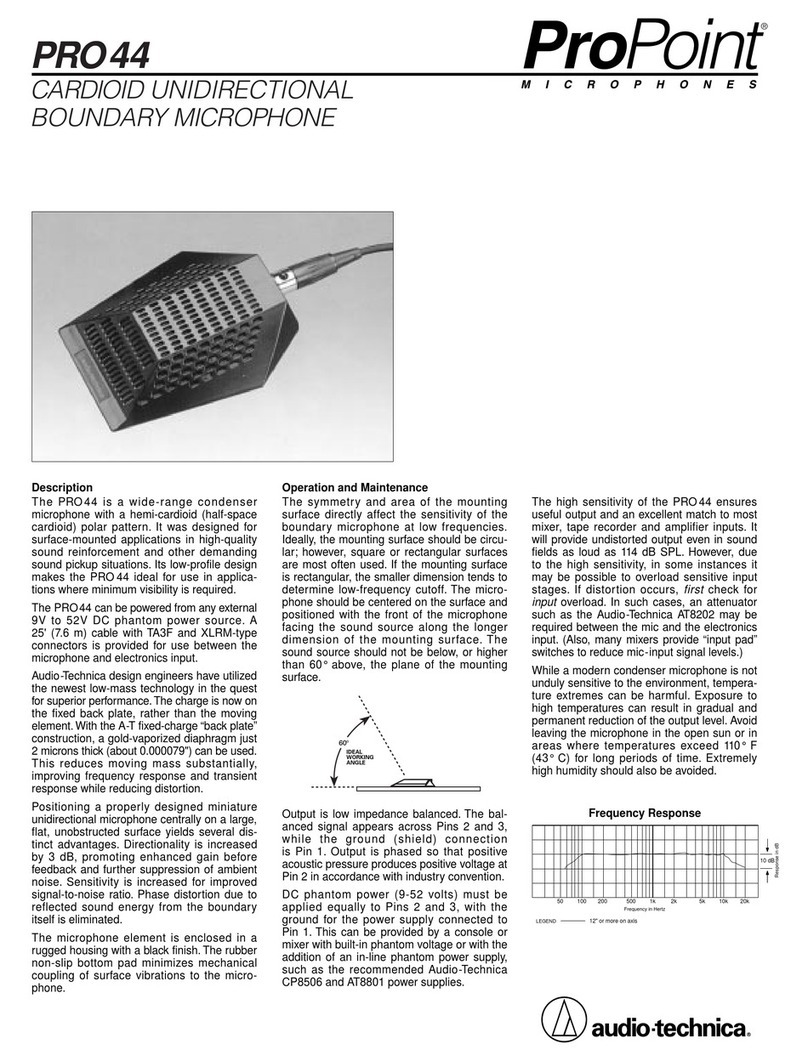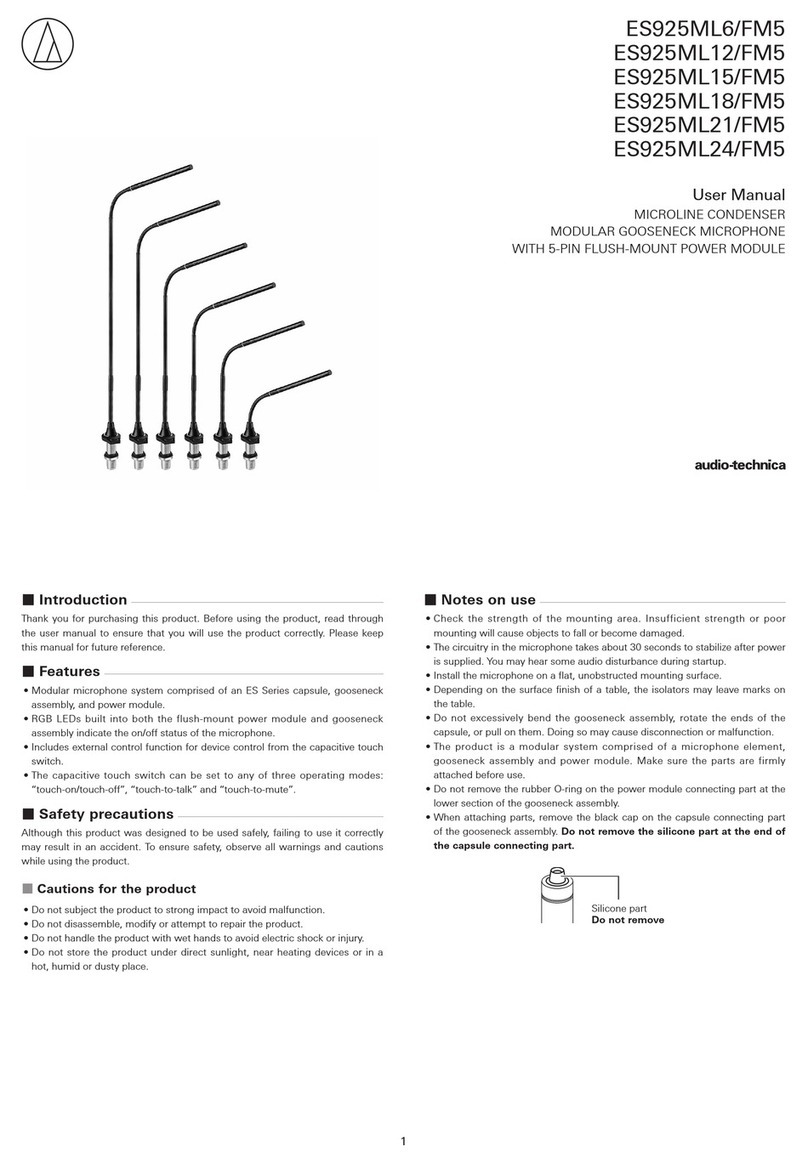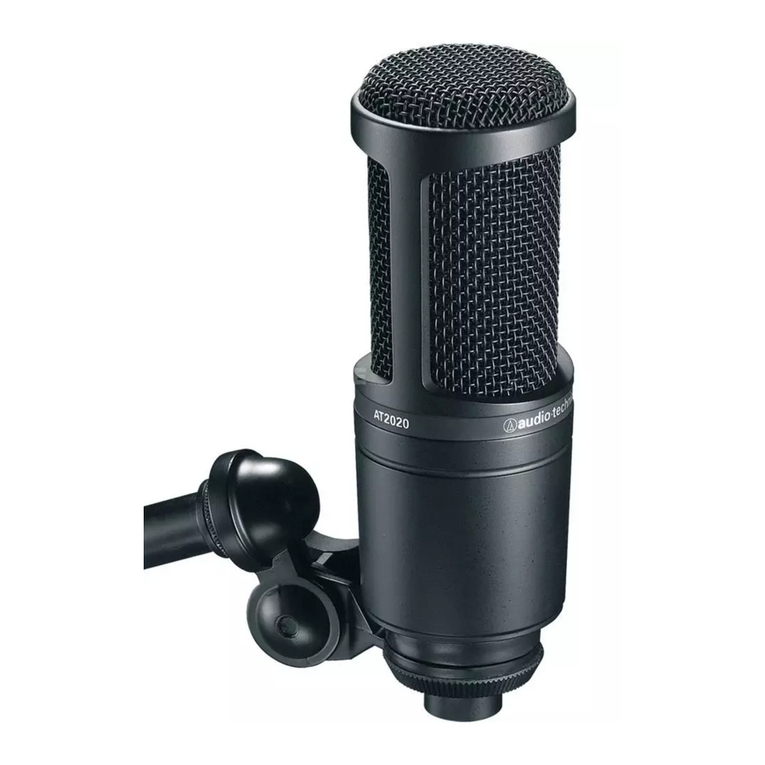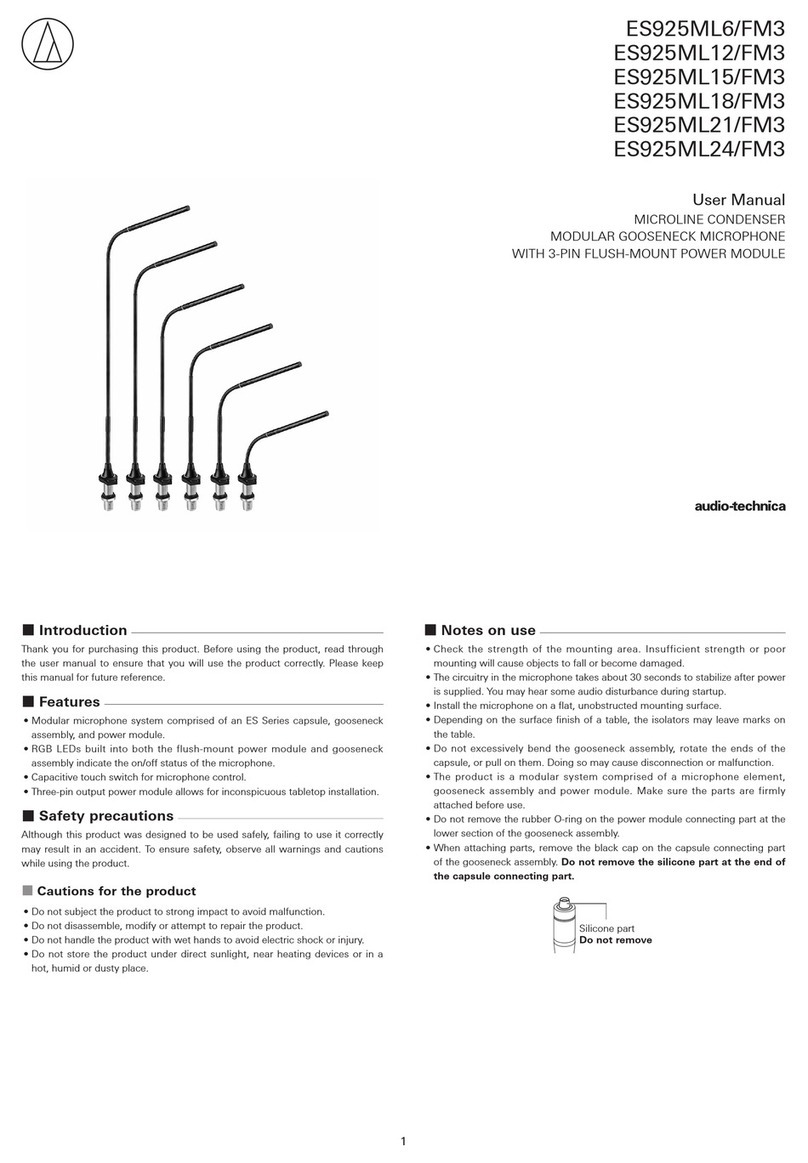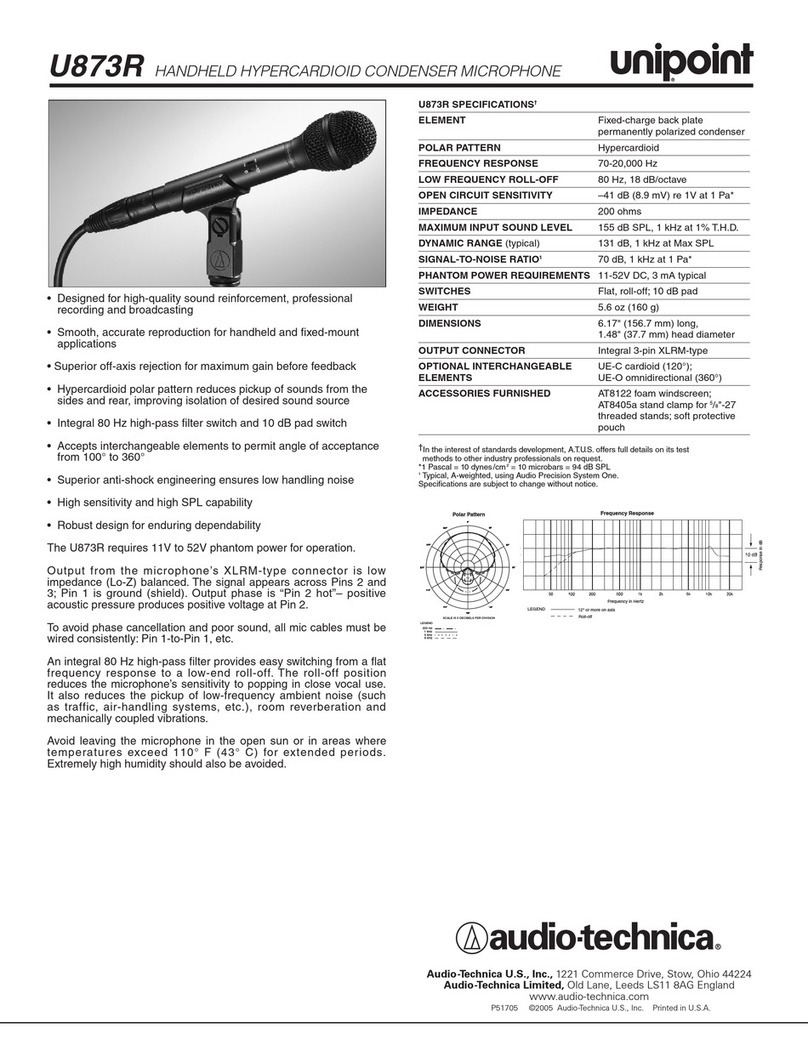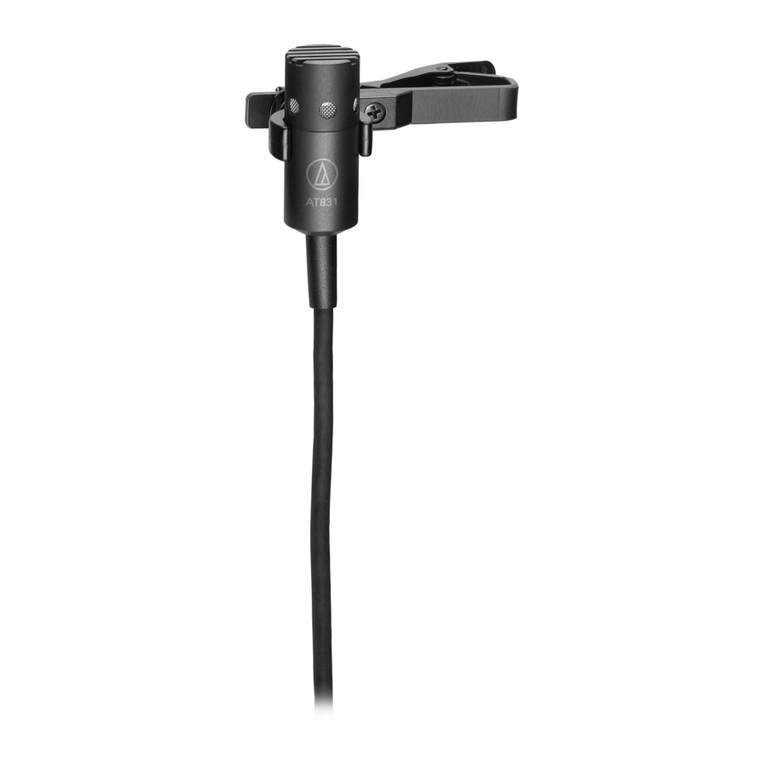
User Manual
Cardioid Dynamic Handheld Microphone AE4100
■Features
■Notes on use
■Connection procedure
Output terminals
PIN1 (ground)
PIN3
(cold)
PIN2 (hot)
■Specifications
Dynamic
Cardioid
90 - 18,000 Hz
-55 dB (1.7 mV) re 1V at 1 Pa
250 ohms
310 g
177.0 mm long, 48.0 mm head diameter,
33.0 mm to 22.0 mm tapered body diameter
Integral 3-pin XLRM-type
AT8470 Quiet-Flex stand clamp for 5/8"-27 threaded stands;
5/8"-27 to 3/8"-16 threaded adapter;
soft protective pouch
•1 Pascal = 10 dynes/cm2 = 10 microbars = 94 dB SPL
*Typical, A-weighted, using Audio Precision System One.
■Polarpattern
■Frequency response
180°
150°
120°
30°
0°
330°
300°
270°
240°
210°
Audio-Technica Corporation
2-46-1 Nishi-naruse, Machida, Tokyo 194-8666, Japan
©2017 Audio-Technica Corporation
Global Support Contact: www.at-globalsupport.com
11-DEC--2020 Form No.ATGC-L0390-20
LEGEND
0°, 50cm
SCALE IS 5 DECIBELS PER DIVISION
LEGEND
200 Hz
1 kHz
5 kHz
8 kHz
Thank you for purchasing this product. Before using the product, read through the user manual to
ensure that you will use the product correctly.
Please keep this manual for future reference.
Output from the microphone’s XLRM-type connector is low impedance (Lo-Z) balanced. The
signal appears across Pins 2 and 3; Pin 1 is ground (shield). Output phase is “Pin 2 hot” – positive
acoustic pressure produces positive voltage at Pin 2.
To avoid phase cancellation and poor sound, all mic cables must be wired consistently: Pin
1-to-Pin 1, etc. For a high-impedance (Hi-Z) mic input, connect a Lo-Z balanced cable to a Hi-Z
matching transformer (A-T CP8201 or equal) at the equipment input.
When using the AE4100 in settings with a stage monitor speaker, the speaker should be located
180° off axis (at the rear of the microphone). This placement, in conjunction with the
microphone’s uniform cardioid pickup pattern, will virtually eliminate the possibility of undesired
audio feedback.
The high sensitivity of the AE4100 assures useful output and an excellent match to most input
sources. In some cases, however, an attenuator such as the Audio-Technica AT8202 may be
required between the microphone and preamplifier to avoid overloading sensitive input stages.
Take care to keep foreign particles from entering the windscreen. An accumulation of iron or
steel filings on the diaphragm, and/or foreign material in the windscreen’s mesh surface, can
degrade performance.
Connect the output terminals of the microphone to a device that has a microphone input
(balanced input). The output connector is an XLRM-type with polarity as shown in the figure
below.
For product improvement, the product is sublect to modification without notice.
• Optimized for the stage with excellent sound isolation properties
• High output level, fast transients and clarity in the joints
• Its integrated anti-pop technology protects against plosives ery effectively and its sophisticated
anti-shock design mitigates handling noise
• Robust construction for consistent reliability on tour
• Cardioid polar pattern improves isolation of desired sound source and reduces pickup of sounds
the side and rear
■Safety precaution
■Cautions for the product
Although this product was designed to be used safely, failing to use it correctly may result in an
accident. To ensure safety, observe all warnings and cautions while using the product.
• Do not subject the product to strong impact to avoid malfunction.
• Do not disassemble, modify or attempt to repair the product.
• Do not handle the product with wet hands to avoid electric shock or injury.
• Do not store the product under direct sunlight, near heating devices or in a hot, humid or dusty
place.
Element
Polar pattern
Frequency response
Open circuit sensitivity
Impedance
Weight
Dimensions
Output connector
Accessories furnished
60°
90°
Response in dB
Frequency in Hertz
10
0
-10
-20
-30
20
500
100
50 200 10k
5k
1k 2k 20k
10 dB
